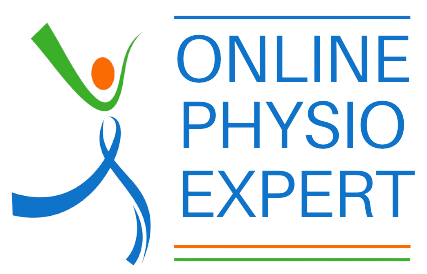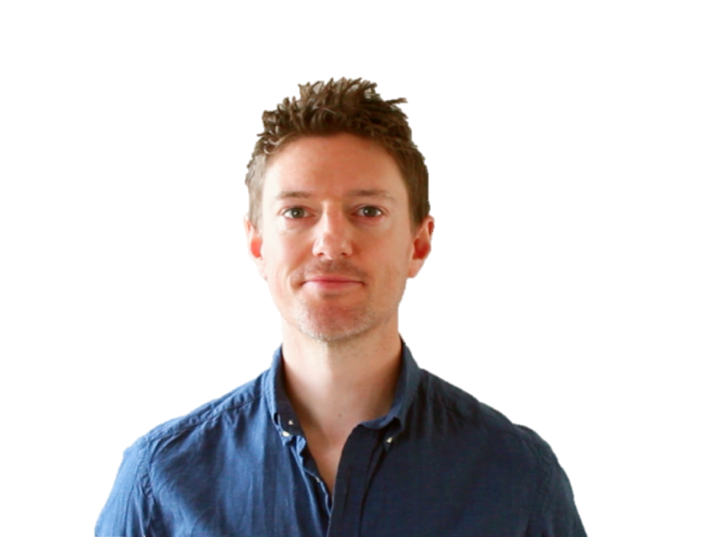



I can just about remember sitting down in a university lecture hall as a keen eighteen-year-old for the first time… there were eighty-two other students just as keen as well. We were there to start our careers as physiotherapists and a driving force for most of us was a personal enjoyment of physical fitness. We knew (even without any teaching, any real grasp of scientific research theory or any significant experience of the world!) that exercise whether recreational or competitive was vital throughout life. I mean it was even in the name of our chosen profession – ‘Physical Therapy’, as our US counterparts more appropriately refer to it. Alright… I’ll tell you – the year was 2000!
Looking back and speaking to members of my cohort (UWE, Bristol) that I keep in touch with, I only have positive things to say about my undergraduate experience. The teaching was to the required depth and built on science including; anatomy, exercise physiology, and taught with enthusiasm by lecturers who had a solid foundation. They too believed in exercise as a powerful healthcare tool.
So why… twenty years later have I been left thinking that musculoskeletal physiotherapy has lost its way? Put simply, it’s because exercise science has become something, we pay lip service to, not the fundamental tenet of what we offer in any practical sense..
To understand the context, we need to look back on the history of the profession and when key changes were made.
Musculoskeletal Physiotherapy was previously characterised by two modes of treatment. Firstly, a variety of ‘hands-on’ therapy including manipulative therapy, icing, massage, and electrotherapy were widely used. Secondly, remedial exercises were prescribed. This may have been done in a class-based system and sometimes through separate clinicians. Indeed, the Society of Remedial Gymnastics & Recreational Therapy merged with the Chartered Society of Physiotherapy in 1985.
Throughout the 1980’s Physiotherapy was transitioned to an ‘autonomous’ profession with full degree status being achieved in practice in the 1990’s. This enabled the profession to develop itself without the oversight of the medical hierarchy.
So, what has my profession done in the last twenty years with this autonomy…
First to go was electrotherapy. Fair enough… there really is zero science behind rubbing some jelly on an ankle sprain and massaging it with a probe in spite of some ‘mechanical energy’ being directed at the tissues. As for ‘laser’ and ‘pulse shortwave therapy’ give me a break…
Next to go was ‘manual therapy’… They told us the evidence was clear; Manual therapy (massage, spinal manipulation, joint mobilisation techniques) did not produce any significant difference in patients’ long term outcome with musculoskeletal conditions. It also made patient’s ‘reliant’ and ‘passive’ passengers in their treatment… it had to go too!
This essentially left exercise as musculoskeletal physiotherapy’s only therapeutic modality which presented the profession with one of two options. Either lead and developed on the scientific research base and practical implementation of exercise-based rehabilitation, or attached to the profession to something else… it went with something else.
The old ‘biomedical approach’ was labelled unscientific and unevidenced as it placed no weight on the ‘psychosocial’ influences on individuals’ musculoskeletal problems. A new era was born (apparently) with the imaginatively named ‘biopsychosocial model’ being adopted. This would enable patients to understand their condition and give them strategies or tools to cope with their pain.
Given that physiotherapists were now the leaders in musculoskeletal rehabilitation and had their own academic profile of course it was right for them to start taking on additional responsibility in the healthcare system. ‘Extended Scope MSK Physiotherapist’ posts were conceived. The NHS trusts set up appropriate training (normally involving taking an injection module and shadowing orthopaedic consultants & rheumatologists for a number of weeks or months).
There were only a few posts in the early years so the candidates were very strong – the keenest and most able members of the musculoskeletal department. It had several excellent knock-on effects for MSK departments as well. It enabled them to be able to retain their best members of staff due to the higher salaries paid for these roles and it also gave a definite hierarchy to the department for junior members of staff like myself. There have been undoubted benefits of furthering MSK USS and injection therapy in recent years.
It doesn’t take a genius to work out that if an organisation pulls itself in too many directions then certain things will suffer.
The reality is that in 2020, most musculoskeletal physiotherapists only have a very basic grasp of exercise physiology – they won’t admit this and I don’t blame them but it’s true. If you asked them about energy systems and time to failure, or how to integrate this into patient rehabilitation they would not be able to answer with any confidence. There has developed an inability to recognise a differentiation between the general effect of any exercise and intervention versus the specific effect of specific types of exercise/s to rectify a specific problem.
Exercise classes are not stratified under any robust criteria for participants to get the best results – or any results from it. The environment of MSK physiotherapy departments with an afterthought small space for a gym. There is no monitoring for patient’s general fitness or specific goals related to their injury in most departments. If you questioned the logic of this and it’s knock on effect for both physiotherapist and patient you would be met with the most common thing you hear “it’s all about general exercise”. This is the real cover for the deskilled MSK physiotherapy professionals to trot out this line.
It is even more devastating when you think of the widespread and devastating consequences obesity and depression have upon our society. Physiotherapists surely should be at the forefront of exercise science.
It’s not that ‘pain management’ itself has no academic background to it. There are stacks of theoretical in vitro scientific papers which confirm the innumerable changes to the central nervous system that occur with chronic stress states or acute or chronic pain states. No one quibbles with that. The problem comes when you roll out a new hierarchy of science without any balance or reason to a particular profession. It has also been assumed that the in vitro science can be realised in vivo.
I was onto this one early when visiting a back pain clinic in a deprived area of London as a junior. The patients all had varying degrees of serious mental health conditions often brought about by the horrors of war in their home countries. I was asked at the end of the day by the extended scope physiotherapist what else they could have done. It is one of the nice questions to ask a junior colleague. “Nothing. You can’t do anything for these people”, I replied. The same holds true today as well. A pain management clinic run by physiotherapists who have no significant qualifications in counselling and clinical psychology are simply not the right people to meet the needs of these individuals.
Next, let’s tackle the more mundane and day to day push for physiotherapists to deliver pain management education, as part of their package of care to their patients. Firstly, it removes time from what should be the main element of care, exercise. Secondly, and more importantly, any ‘education’ regarding pacing and early movement etc necessarily suffers from the same problems that exercise based management has over the years – Patient Engagement.
The result of two decades of unscientific preference on the in vitro science behind pain management rather than developing a good looking, systematic form of exercise rehabilitation that physiotherapists and patients can follow. Well, I invite you to ask visitors of NHS run MSK departments now about their experience and you’ll get a swift response… “All they did was talk to me”… and guess what the net effect of this is? You’re already there… they book another appointment with their overburdened GP practice!
This is where musculoskeletal physiotherapy really did get more ‘Priti Patel’ than ‘Plato’. The above can be put down to well-meaning but erroneous decisions. However, the dangerous mismanagement of the so-called ‘expert status’ within the profession is clearly negligent.
No other profession has allowed such extensions of their normal working duties without any gatekeeping structure or formal, recognised training scheme to affiliate who may be suitable for these roles. If you are reading this as a GP or a consultant… yes, as physiotherapists we are required to undertake precisely zero exams to call ourselves ‘Extended Scope Physiotherapists’. There is no formal training scheme from our professional body and this has led to pretty obvious outcomes.
Previously limited to the most gifted musculoskeletal physiotherapists being able to image patients, request bloods, inject and in some cases perform USS (after extensive local training via orthopaedic/ radiology dept’s) now pretty much every physio after a few years is labelled an ‘Extended Scope Physiotherapist’. The fact that these individuals often have no extended scope skills was probably the real driver to renaming extended scope roles to ‘Advanced Practice Physiotherapists’.
Well, too little, too late, because these inexperienced, physiotherapists who haven’t had any real training are now sometimes leading the MSK departments. It really is the blind leading the blind. Some Trusts and (of course) private providers of NHS services have now started to go one further and issue ‘Consultant Physiotherapist’ posts. Again, if you are a GP or medical consultant reading this, it requires no exams and no qualifications to become one of these new breed, ‘Consultant Physiotherapists’.
Remember, these are the people who are deciding who, at what stage to image people with underlying medical problems. I’ll leave you with just one of hundreds of incidents I was left astonished by. Physiotherapists love a case study; they just love them. So… on my first day at work as part of a quarterly ‘Extended Scope Physiotherapist’ meeting it was no surprise that first on the agenda was ‘Mr X, LBP & bilateral leg symptoms’. So, what was this case study about? Well the question (keep reading… I’m still struggling 3 years later to see how it’s a question) was “whether we should have imaged Mr X on his presentation?”
Why don’t you decide for yourselves… (if you are a medical Dr please look away now!);
All the excuses were given; “what sort of Ca – some like metastasizing to bone more than others”, “imaging doesn’t always demonstrate anything more than age related changes” etc etc etc. You see this is what happens when you give inexperienced clinicians significant responsibility. They overcomplicate things, they have to attempt this to be ‘the expert’. I made my feeling known: “If a consultant neurosurgeon was in the room now, they’d sack the lot of you – and so would I”. Good first day at work…
Now that the vision appears to be for physiotherapists to be an integrated part of medical teams again, “First Contact MSK Physiotherapists”. It’s about time we address these inadequacies to help our colleagues. I’ve heard a lot of GP and consultant bashing (the medical type not the type I like to bash) from physiotherapists over the years but it’s actually the medical profession we need to learn from – to put in place: A safe, effective hierarchy (with a robust exam structure) that is based in hard science and has clear, systematic treatments for conditions. This will involve a systematic series of exercises and some support through this journey for patients.
For the meantime I’m going for a balanced approach with my patients:
If they’re significantly overweight, they won’t get referred to physiotherapy – I’ll politely ask them to address their diet and increase their physical activity levels.
For patients with clear mechanical pain I’ll tell them to be sensible about what they do until things settle and give them a progressive series of stretches and strengthening exercises online. If this does not cut the mustard, I’ll refer them on to the physio department for further intervention.
For patients who require a scan or bloods due to significant neurological findings or systemic symptoms I’ll request these appropriately, sometimes after consulting one of my GP colleagues. I’m just glad I did my training and can spot these patients appropriately.
I won’t be calling myself a consultant anytime soon though… that’d be getting ahead of myself!
Over the following weeks, I’ll be outlining how Primary Care Networks and MSK Physiotherapists can grasp the massive opportunity that First Contact MSK Physiotherapy presents to change many of the above, systemic problems. It will require a shift in thinking from physiotherapists as well as a will to change from General Practices to integrate these new roles appropriately.
The author, Chris Pruvey works in a south west London Primary Care Network and delivers an online tools for GPs and networks, onlinephysioexpert.com. Contact c.pruvey@msk-gateway.co.uk